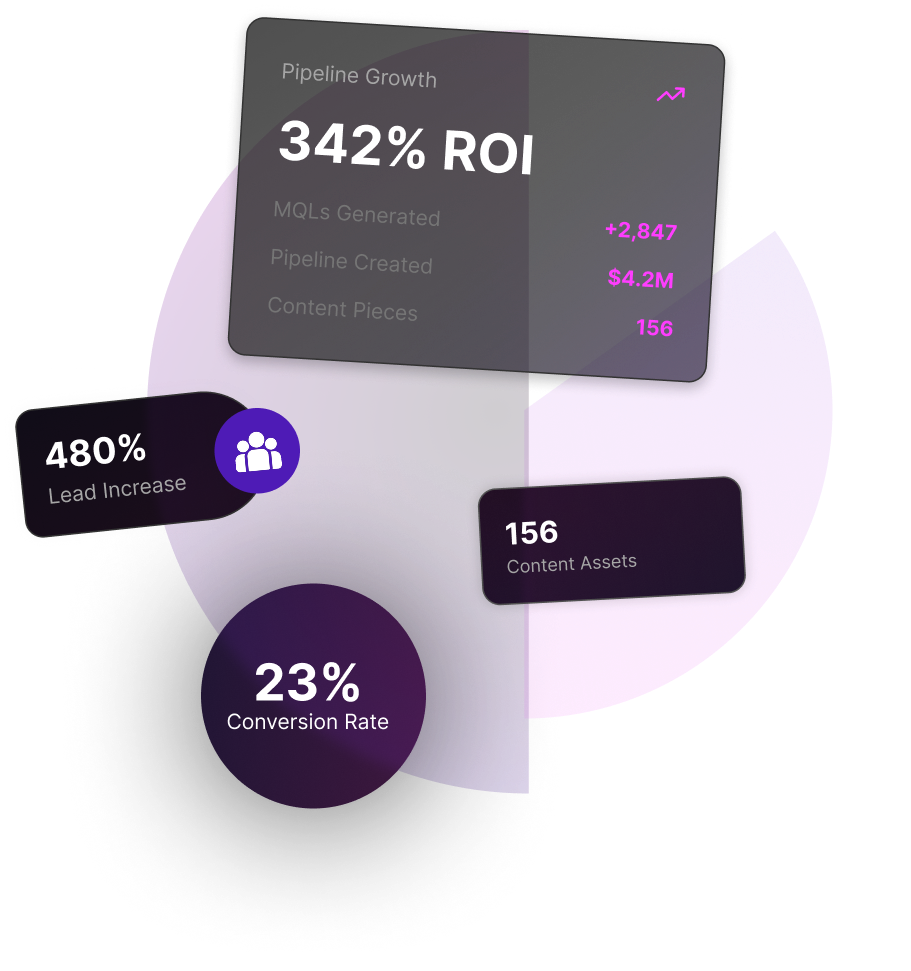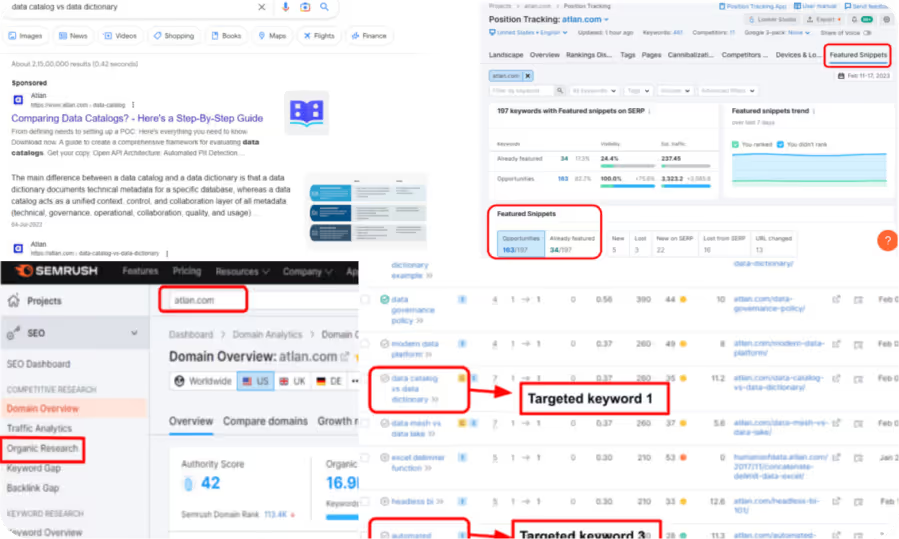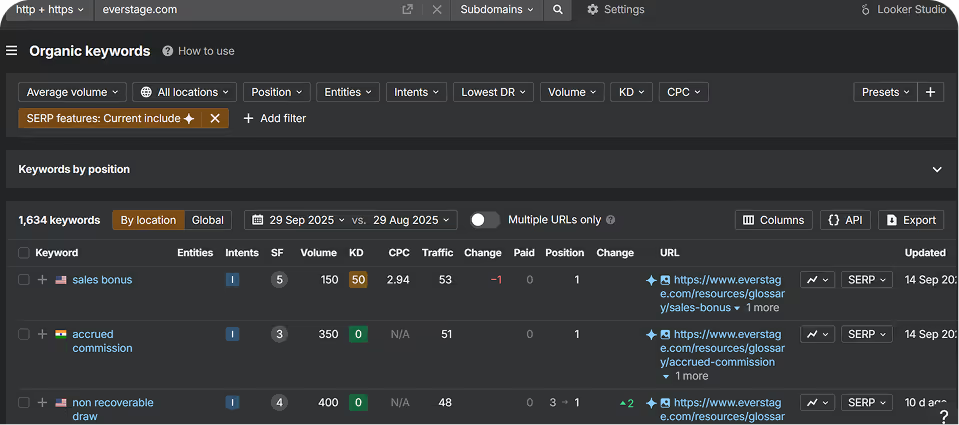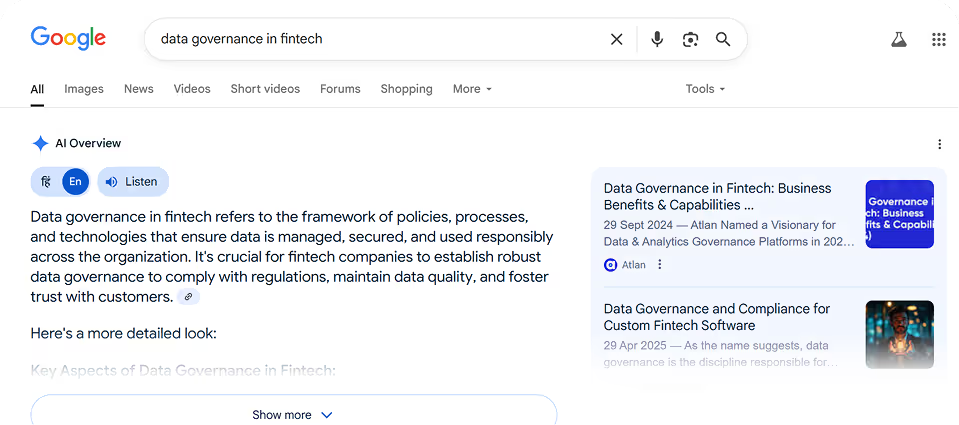
The Content Marketing Agency Built for the AI Search Era
From top Google rankings to showing up in AI-generated answers, we make sure your brand is impossible to miss when your buyers are searching.





50+ SaaS companies trust us

Trusted by Fast-Growth SaaS & B2B Brands




























40% Boost
in Organic Traffic for Atlan
SERP + AIO
Proven visibility framework
80+ Client blogs
in AI Overviews
We Turn Content Into Your Best Growth Channel


Content Strategy Development
Data-driven frameworks tailored to your goals.
Here’s What We Bring to Your Growth Table
From planning to promotion, every service is designed to grow rankings, engagement, and pipeline.

SEO-Optimized Content Creation
Search-ready content that brings consistent traffic.

Lead Generation & Conversion
Turn visibility into leads that fuel growth.

Content Distribution & Promotion
Right content, right channels, right time.

Performance Monitoring & Optimization
Smarter adjustments for better ROI.

Our AI-Powered Content Workflow for SaaS
So, Why Choose Revv Growth Over Others?











Seen Enough?
Let’s Talk About Your Growth
From AI Overviews to LLMs, we’ll show you How we make visibility work for growth.

Revving Up Real Client Growth

40% increase
in organic traffic in 6 months
Blogs
ranking in featured snippets
AI Overviews
Multiple placements across GPT, Perplexity, and Copilot



Full funnel content types we create for our clients
Content that drives engagement across every stage of your customer journey

Top of Funnel (TOFU)

What you get
Consistent traffic growth across Google and AI search platforms
What we do

Attract new audiences through strategic content placement

Solve early buyer pain points with targeted solutions

Build brand authority across search platforms
How we do it

Comprehensive keyword & SERP research analysis

SEO-optimized blogs for featured snippets + AI Overviews

High-converting campaign landing pages

Middle of Funnel (MOFU)

What you get
Engaged, qualified leads who see your product as the right solution.
What we do

Educate prospects on solutions that address their challenges

Bridge their pain points directly to your product capabilities

Build trust and authority through credibility-driven content
How we do it

Case studies, comparison blogs & solution pages

Real-world examples + data-driven insights

High-converting campaign landing pages

Bottom of Funnel (BOFU)

What you get
Sales-ready leads and high-conversion assets that accelerate deal closures.
What we do

Drive action by creating content that validates purchase decisions

Address objections with product-led content and proof points

Support sales teams with conversion-focused assets
How we do it

Product-led blogs, landing pages & ROI case studies

Optimize every piece for SEO and buyer relevance

Add CTAs designed to trigger demos, free trials, or sign-ups
Ready to turn content into your best-performing channel?
Connect with us and we’ll show you how data-driven strategies create traffic, visibility, and conversions, without wasted spend.



Let’s Build Your Growth Story
No commitments. Just insights.
No fluff, no hard sells — just a focused conversation about your growth
Ready to turn content into your best-performing channel?
Connect with us and we’ll show you how data-driven strategies create traffic, visibility, and conversions, without wasted spend.
Content Marketing Agency FAQs
Most clients start seeing early traction such as improved rankings, visibility in AI Overviews, and traffic lifts within 3 to 4 months. Significant growth in leads and conversions usually shows in 6 to 9 months depending on your industry and competition.

It starts with a quick consultation where we understand your goals. From there, we map a tailored strategy covering SEO, AI Overviews (AIO), Google Overviews (GEO), and content funnels. We begin with research, topic planning, and a clear execution roadmap.

No. While we have deep expertise in SaaS, B2B, and tech-driven businesses, our process works across industries from startups to enterprises. What matters most is your growth objective, not your sector.

We focus on business outcomes, not vanity metrics. That means looking at rankings, AI Overview presence, traffic, lead conversions, and ultimately revenue influence. Every piece of content is tied back to measurable results.

Our strategy blends keyword targeting with funnel mapping. We do not just rank blogs. We build content journeys from awareness to conversion that turn visitors into qualified leads.

Yes. You will get transparent reporting on performance such as traffic growth, AI Overview presence, conversions, and ROI metrics. You will also have regular strategy reviews so you always know what is working.

We use AI to accelerate research, identify ranking opportunities, and support content workflows. Every deliverable is refined, edited, and optimized by experienced strategists and writers to ensure quality and brand fit.

Because we go beyond traditional SEO. As a content marketing agency US companies trust, we combine SEO, AIO, and GEO visibility with conversion-focused strategies. For example, we helped Atlan appear in 80+ AI Overviews and grow organic traffic by 40%. That is growth you can measure.









